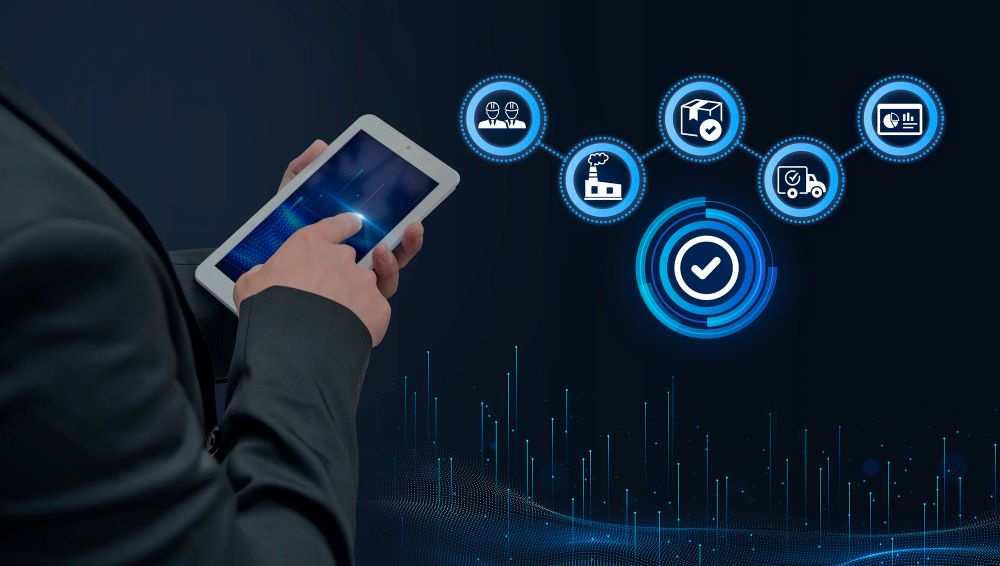Introduction
The Internet of Things (IoT) has transcended its initial reputation as a domain reserved for consumer gadgets and smart home devices. While these applications have certainly captured public attention, the true potential of IoT lies in its ability to revolutionize industries and solve complex challenges through innovative solutions. In this article, we delve beyond the realm of commonplace gadgets to explore the diverse and niche applications emerging within the IoT development landscape.
Understanding IoT Application Development Services
Before delving into niche applications, it's crucial to grasp the foundation of IoT application development services. IoT development involves creating interconnected systems that collect, exchange, and analyze data to drive automation, efficiency, and insights. This process typically entails hardware integration, software development, data analytics, and connectivity protocols to enable seamless communication between devices.
Key components of IoT application development services include:
- Hardware Integration: Incorporating sensors, actuators, and other hardware components into devices to enable data collection and interaction with the physical world.
- Software Development: Creating applications, firmware, and backend systems to manage device communication, data processing, and user interfaces.
- Data Analytics: Leveraging collected data to derive actionable insights, optimize operations, and drive informed decision-making.
- Connectivity Protocols: Establishing communication standards such as Wi-Fi, Bluetooth, Zigbee, or cellular networks to enable device connectivity and interoperability.
Now, let's explore some niche applications where IoT development services are making significant strides.
- Industrial IoT (IIoT) for Smart Manufacturing
Industrial IoT, or IIoT, is transforming traditional manufacturing processes by introducing connectivity, automation, and data-driven insights. Through IoT-enabled sensors and monitoring systems, manufacturers can optimize production efficiency, minimize downtime, and enhance product quality. Key applications include predictive maintenance, real-time asset tracking, and supply chain optimization.
For example, IoT sensors installed on machinery can monitor equipment health in real-time, predicting potential failures before they occur. This proactive approach to maintenance minimizes unplanned downtime and reduces maintenance costs. Additionally, IIoT facilitates the integration of disparate systems across the manufacturing ecosystem, enabling seamless data exchange and process optimization.
- Precision Agriculture
In the agricultural sector, IoT technologies are revolutionizing traditional farming practices through precision agriculture solutions. By deploying sensors, drones, and IoT-enabled devices in the field, farmers can monitor soil conditions, weather patterns, and crop health with unprecedented accuracy. This data-driven approach allows for optimized irrigation, fertilizer usage, and pest management, ultimately increasing crop yields while minimizing resource wastage.
For instance, IoT sensors embedded in soil can continuously monitor moisture levels and nutrient content, enabling farmers to implement precise irrigation and fertilization schedules tailored to specific crop needs. Similarly, drones equipped with cameras and sensors can perform aerial surveys to identify areas of crop stress, disease outbreaks, or pest infestations, allowing for targeted interventions and improved yield outcomes.
- Healthcare and Remote Patient Monitoring
In the healthcare sector, IoT application development services are driving innovations in remote patient monitoring, personalized medicine, and healthcare delivery. Through wearable devices, smart sensors, and healthcare IoT platforms, healthcare providers can remotely monitor patient vital signs, track medication adherence, and detect early signs of health deterioration. This real-time data enables timely interventions, reduces hospital readmissions, and enhances patient outcomes.
For example, IoT-enabled wearable devices such as smartwatches or patches can continuously monitor parameters like heart rate, blood pressure, and glucose levels, transmitting data to healthcare professionals for analysis. In addition, IoT platforms can aggregate and analyze patient data from multiple sources, providing insights into population health trends, disease management strategies, and healthcare resource allocation.
- Smart Cities and Urban Infrastructure
The concept of smart cities leverages IoT technologies to improve urban infrastructure, enhance public services, and optimize resource utilization. Through IoT-enabled sensors, intelligent streetlights, and connected transportation systems, cities can address challenges related to traffic congestion, energy consumption, and environmental sustainability. Key applications include smart traffic management, waste management, and energy-efficient buildings.
For instance, IoT sensors embedded in roadways can gather real-time traffic data, enabling dynamic traffic light optimization and congestion mitigation strategies. Similarly, smart waste management systems utilize IoT sensors to monitor bin fill levels, optimizing waste collection routes and reducing operational costs. Furthermore, IoT-enabled building automation systems regulate lighting, heating, and cooling based on occupancy patterns, maximizing energy efficiency and occupant comfort.
- Environmental Monitoring and Conservation
IoT technologies play a crucial role in environmental monitoring and conservation efforts by providing real-time data on air quality, water resources, and biodiversity. Through networks of sensors, drones, and IoT platforms, environmental scientists and conservationists can track ecosystem health, detect pollution incidents, and mitigate environmental risks. This data-driven approach supports evidence-based decision-making and facilitates proactive conservation strategies.
For example, IoT sensors deployed in water bodies can monitor parameters such as pH levels, dissolved oxygen, and pollutant concentrations, alerting authorities to potential contamination events. Similarly, wildlife tracking devices equipped with GPS and environmental sensors enable researchers to study animal behavior, migration patterns, and habitat preferences, informing conservation efforts and ecosystem management strategies.
Conclusion
The IoT development landscape extends far beyond consumer gadgets, encompassing a diverse array of niche applications across industries. From smart manufacturing and precision agriculture to healthcare, smart cities, and environmental monitoring, IoT technologies are driving innovation, efficiency, and sustainability. By leveraging IoT application development services, organizations can unlock new opportunities, solve complex challenges, and create a more connected and intelligent world. As IoT continues to evolve, the possibilities for transformative applications are limitless, shaping the future of technology and society.


No comments yet